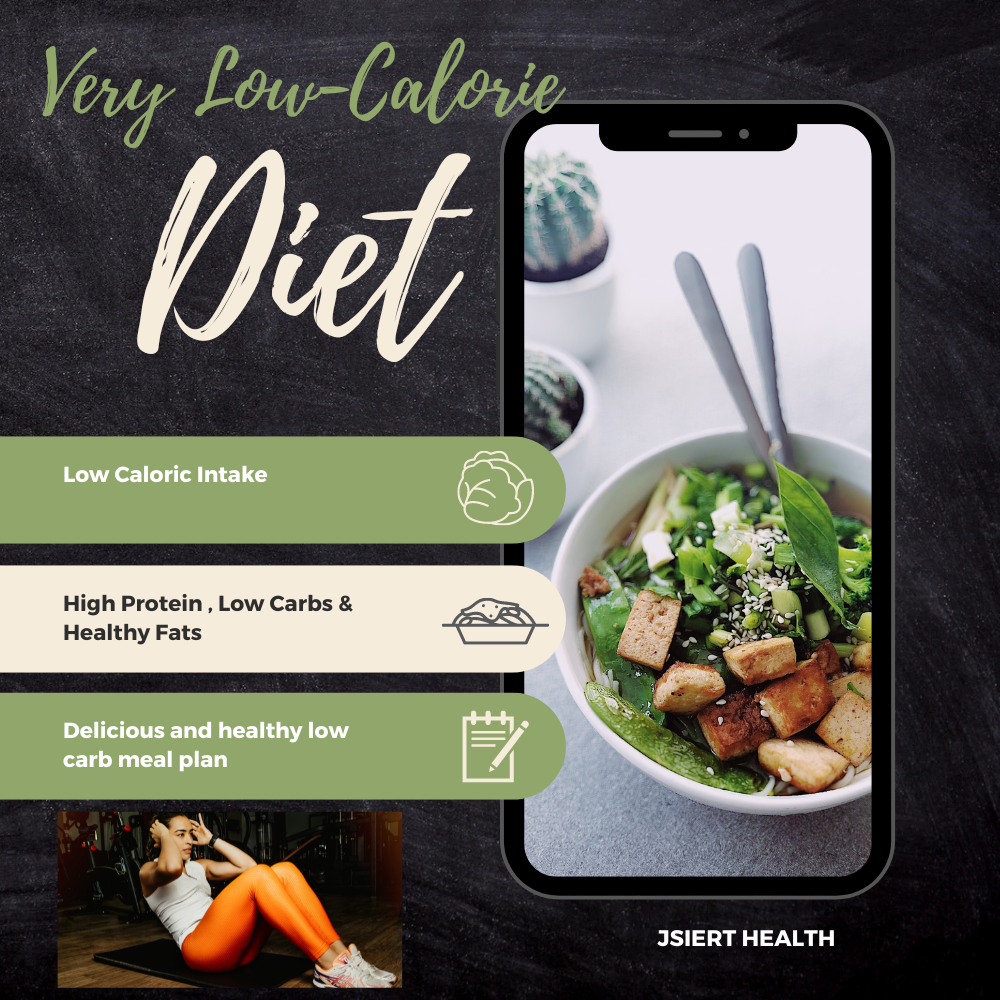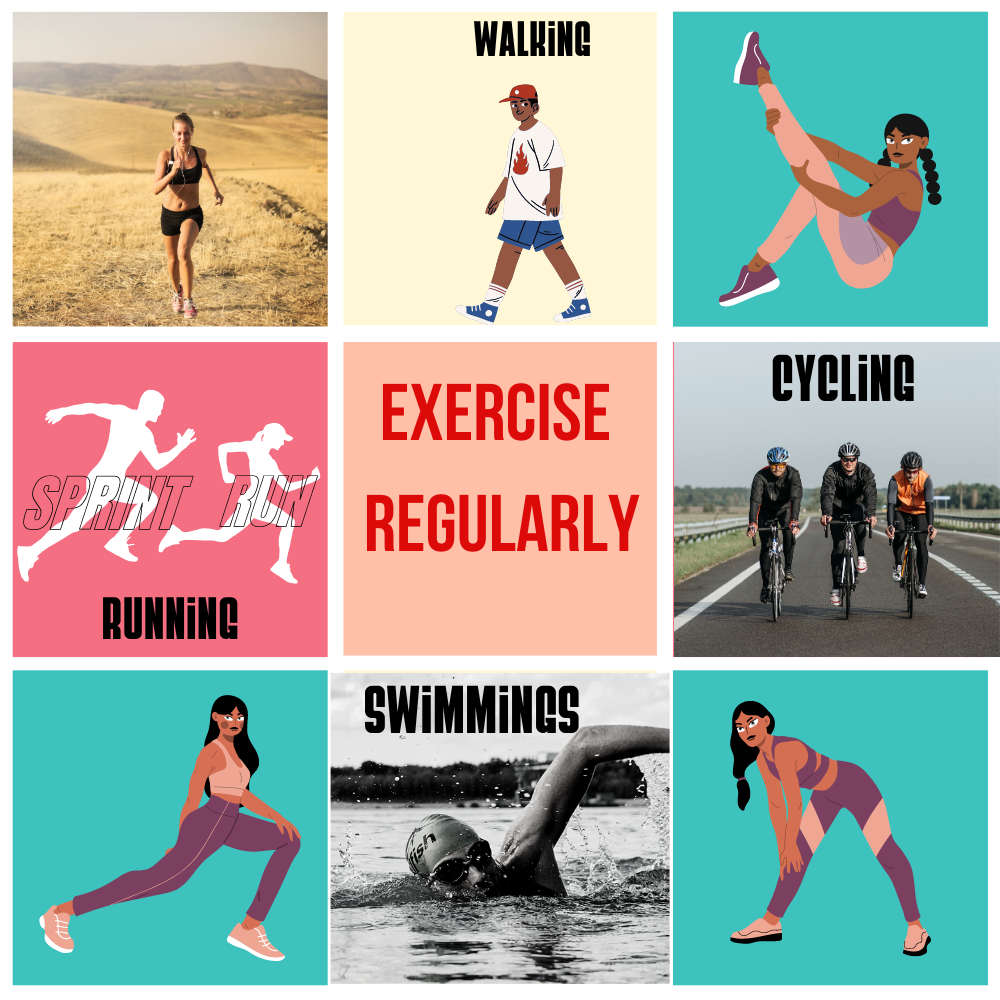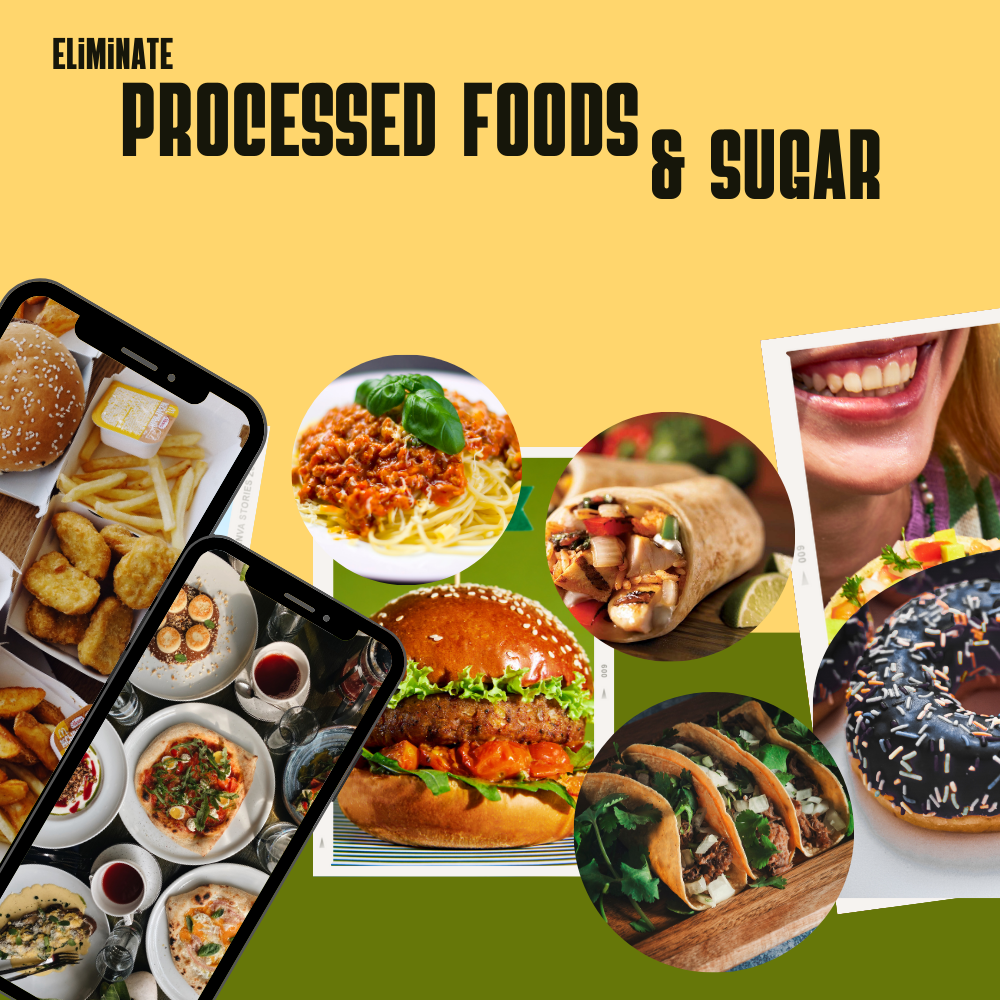Lose 10 kg in 2 Weeks: Fast and Effective Weight Loss Tips
Lose 10 kg in 2 Weeks: Fast and Effective Weight Loss Tips
Losing 10 kg in 2 weeks is an extremely ambitious goal and not generally recommended due to potential health risks. However, if you are determined to pursue rapid weight loss, it’s crucial to do so safely and under the guidance of a healthcare professional. Here are some detailed tips to help you achieve significant weight loss in a short period:
1. Adopt a Very Low-Calorie Diet (VLCD)

Caloric Intake
- Target: Aim for a daily intake of 800-1200 calories. This significant reduction will create a substantial caloric deficit, necessary for rapid weight loss.
- Tracking: Use a food diary or mobile app like MyFitnessPal or Lose It! to monitor your calorie intake accurately.
Meal Structure and Nutrition
- Small, Frequent Meals: Eat 5-6 small meals throughout the day to keep your metabolism active and prevent hunger pangs.
- High Protein: Prioritize protein to preserve muscle mass and promote satiety. Lean protein sources include chicken breast, turkey, fish, tofu, legumes, and low-fat dairy.
- Low Carbohydrates: Limit your intake of carbohydrates to reduce insulin levels and promote fat burning. Focus on complex carbohydrates such as vegetables and whole grains.
- Healthy Fats: Incorporate healthy fats in moderation to support overall health and satiety. Good sources are avocados, nuts, seeds, and olive oil.
Sample Foods
- Lean Meats: Skinless chicken breast, turkey, grilled or baked fish (e.g., salmon, tuna, cod).
- Eggs: Boiled or scrambled egg whites, or whole eggs in moderation.
- Low-Fat Dairy: Greek yogurt (non-fat or low-fat), cottage cheese, skim milk.
- Vegetables: Spinach, kale, broccoli, bell peppers, cucumbers, tomatoes, carrots, zucchini.
- Healthy Fats: Avocados, almonds, chia seeds, olive oil (used sparingly).
2. Increase Water Intake
- Hydration: Drink at least 3-4 liters of water daily. Staying well-hydrated helps to flush out toxins, reduce water retention, and keep metabolism running efficiently.
- Timing: Drinking a glass of water before meals can help reduce appetite and control calorie intake.
3. Exercise Regularly

Cardio
- Frequency: Engage in cardio exercises for 60-90 minutes daily. This can include running, cycling, swimming, or high-intensity interval training (HIIT).
- Intensity: High-intensity workouts burn more calories in less time. Incorporate sprints, burpees, and jump squats into your routine.
Strength Training
- Routine: Perform strength training exercises 3-4 times a week to preserve muscle mass and boost metabolism.
- Exercises: Focus on compound movements such as squats, deadlifts, bench presses, and push-ups, which work multiple muscle groups simultaneously.
Daily Activity
- Increase Movement: Increase your daily activity level by taking the stairs, walking instead of driving, and doing household chores. Use a pedometer or fitness tracker to ensure you’re getting at least 10,000 -12000 steps a day.
4. Intermittent Fasting
- Method: Follow the 16/8 intermittent fasting method, where you fast for 16 hours and eat during an 8-hour window (e.g., 10 AM to 6 PM).
- Benefits: Intermittent fasting can help reduce overall calorie intake and improve fat-burning efficiency. It also helps regulate insulin levels and enhances metabolic health.
5. Eliminate Sugar and Processed Foods

- Avoid: Cut out sugary drinks, sweets, fast food, and processed snacks. These foods are high in empty calories and can hinder weight loss efforts.
- Focus: Consume whole, unprocessed foods that are nutrient-dense. These include fruits, vegetables, lean proteins, and whole grains.
6. Reduce Carbohydrate Intake
- Low-Carb Diet: Aim for 20-50 grams of carbs per day. This can help induce ketosis, a metabolic state where your body burns fat for energy instead of carbohydrates.
- Avoid: Foods such as bread, pasta, rice, and high-carb vegetables like potatoes and corn.
7. Increase Protein Intake
- High-Protein Foods: Include sources such as chicken, turkey, fish, eggs, beans, and legumes in your diet.
- Benefits: Protein increases satiety, helps maintain muscle mass, and boosts metabolism, which is crucial during a VLCD.
8. Get Enough Sleep
- Sleep Duration: Aim for 7-9 hours of quality sleep each night. Lack of sleep can disrupt hunger hormones, increasing cravings and appetite.
- Routine: Establish a regular sleep schedule by going to bed and waking up at the same time every day, even on weekends.
9. Monitor and Track Progress
- Food Diary: Keep a detailed log of everything you eat and drink to stay accountable and ensure you stick to your calorie limit.
- Weight Tracking: Weigh yourself daily at the same time each day. Track your progress to stay motivated and make necessary adjustments.
10. Consult a Professional
- Medical Supervision: Due to the restrictive nature of a VLCD and the intensity of rapid weight loss, consult with a doctor or dietitian before starting. They can provide personalized advice and monitor your health.
Sample Meal Plan
Breakfast:
- Option 1: Scrambled egg whites with spinach and a slice of avocado.
- Option 2: Greek yogurt with a handful of berries and a teaspoon of chia seeds.
Mid-Morning Snack:
- Option 1: A small apple with 10 almonds.
- Option 2: A protein shake made with water or skim milk.
Lunch:
- Option 1: Grilled chicken breast with a quinoa salad (mixed with cucumbers, tomatoes, and a squeeze of lemon).
- Option 2: A mixed greens salad with tofu, cherry tomatoes, cucumbers, and a light vinaigrette dressing.
Afternoon Snack:
- Option 1: Carrot sticks with a tablespoon of hummus.
- Option 2: A small bowl of cottage cheese with sliced cherry tomatoes.
Dinner:
- Option 1: Baked salmon with a side of steamed broccoli and a small sweet potato.
- Option 2: Stir-fried tofu with mixed vegetables (bell peppers, zucchini, and snap peas) in a light soy sauce.
Evening Snack (if needed):
- Option 1: A handful of almonds (about 10).
- Option 2: A small bowl of low-fat Greek yogurt with a few slices of cucumber.
Additional Tips
- Meal Prep: Plan and prepare your meals in advance to avoid impulsive eating and ensure you stick to your calorie limit.
- Variety: Use different herbs, spices, and cooking methods to keep your meals interesting and prevent boredom.
- Support: Engage with a support group or find a weight loss buddy to keep you motivated and accountable.
- Mindful Eating: Practice mindful eating by chewing slowly, savoring each bite, and avoiding distractions such as TV or smartphones during meals.
Psychological and Emotional Support
- Mindfulness and Meditation: Practice mindfulness and meditation to manage stress and emotional eating. Apps like Headspace and Calm offer guided sessions.
- Support Groups: Join a weight loss support group to share your journey, gain encouragement, and learn from others’ experiences.
- Positive Affirmations: Use positive affirmations to maintain a healthy mindset and stay motivated. Repeating affirmations like “I am committed to my health and fitness goals” can help reinforce your determination.
- Set Realistic Goals: Break down your 10 kg weight loss goal into smaller, manageable milestones. Celebrate each achievement to stay motivated.
- Professional Help: Consider seeing a therapist or counselor if you struggle with emotional eating or other psychological barriers to weight loss.
Detailed Breakdown of Daily Routine
Morning Routine
- Hydrate: Start your day with a large glass of water. Adding a squeeze of lemon can help kickstart your metabolism.
- Light Exercise: Begin with 10-15 minutes of light exercise, such as stretching or yoga, to wake up your muscles and prepare for the day.
- Healthy Breakfast: Consume a protein-rich breakfast within an hour of waking up to stabilize blood sugar levels and reduce cravings.
Mid-Morning Routine
- Snack Time: Have a small, healthy snack to keep your metabolism active and energy levels stable. Choose high-protein options to avoid sugar crashes.
Lunchtime Routine
- Balanced Meal: Ensure your lunch includes lean protein, vegetables, and a small portion of healthy fats. This combination helps sustain energy and keeps you full until your next meal.
Afternoon Routine
- Hydrate: Continue drinking water throughout the day. Aim for another liter of water before dinner.
- Physical Activity: Incorporate a 30-minute workout session. This can be a brisk walk, a cardio workout, or strength training exercises.
- Afternoon Snack: Choose a snack that is high in protein and low in sugar to maintain energy levels.
Evening Routine
- Light Dinner: Keep dinner light but nutritious, focusing on protein and vegetables. Avoid heavy, carb-laden foods that can disrupt sleep.
- Hydrate: Finish your daily water intake by drinking another glass of water before bed.
- Relaxation: Wind down with a relaxing activity such as reading, meditating, or taking a warm bath to prepare for a good night’s sleep.
Night Routine
- Sleep Hygiene: Maintain a cool, dark, and quiet environment for sleeping. Avoid screens for at least an hour before bedtime.
- Regular Sleep Schedule: Aim to go to bed and wake up at the same time every day to establish a consistent sleep pattern.
Conclusion
Losing 10 kg in 2 weeks is an aggressive goal that requires discipline, dedication, and careful planning. By adopting a very low-calorie diet, increasing water intake, exercising regularly, and following the additional tips and routines provided, you can maximize your chances of achieving this goal. Always prioritize your health, consult professionals when needed, and remember that sustainable weight loss involves long-term lifestyle changes.
FAQ section addressing common questions about losing 10 kg in 2 weeks with fast and effective weight loss tips:
1. Is it Safe to Lose 10 kg in 2 Weeks?
Losing 10 kg in 2 weeks is an aggressive goal and may not be safe for everyone. Rapid weight loss can lead to muscle loss, nutritional deficiencies, gallstones, and other health issues. It’s crucial to consult with a healthcare professional before starting any extreme diet or exercise regimen.
2. How Can I Ensure I’m Losing Fat and Not Muscle?
To minimize muscle loss during rapid weight loss, focus on consuming an adequate amount of protein, engaging in strength training exercises, and avoiding excessive calorie deficits. Additionally, ensure you’re getting enough rest and recovery to support muscle preservation.
3. What Are the Risks Associated with Very Low-Calorie Diets (VLCDs)?
VLCDs can lead to nutrient deficiencies, fatigue, dizziness, electrolyte imbalances, and a slowed metabolism. Prolonged use of VLCDs without medical supervision can have serious health consequences. It’s essential to follow a VLCD under the guidance of a healthcare professional.
4. Can I Exercise While Following a VLCD?
Yes, but it’s essential to listen to your body and not overexert yourself, especially when consuming very few calories. Focus on low-impact exercises, such as walking, swimming, or yoga, and avoid high-intensity workouts that could lead to fatigue or injury.
5. How Can I Stay Motivated During a Rapid Weight Loss Journey?
Set realistic goals, celebrate small victories, and surround yourself with supportive friends and family. Keep track of your progress, focus on the positive changes you’re experiencing, and remind yourself of the reasons why you want to lose weight.
6. What Should I Do After Achieving My Weight Loss Goal?
After achieving your weight loss goal, focus on transitioning to a sustainable, balanced diet and exercise routine. Gradually increase your calorie intake to maintain your weight loss, continue exercising regularly, and prioritize overall health and well-being.
7. How Can I Prevent Weight Regain After Losing 10 kg?
To prevent weight regain, avoid returning to unhealthy eating habits and sedentary behaviors. Focus on maintaining a balanced diet, staying physically active, managing stress effectively, and seeking support from healthcare professionals or support groups if needed.
8. Are There Any Supplements That Can Help with Weight Loss?
While some supplements may claim to aid in weight loss, their effectiveness and safety vary. It’s crucial to consult with a healthcare professional before taking any supplements, as they may interact with medications or have adverse effects.
9. Can I Customize the Meal Plan to Suit My Dietary Preferences or Restrictions?
Yes, the meal plan provided can be customized to accommodate dietary preferences, allergies, or restrictions. Substitute ingredients as needed and ensure you’re still meeting your nutritional needs while staying within your calorie target.
10. How Long Should I Follow These Tips to Lose 10 kg?
The duration for losing 10 kg depends on various factors such as starting weight, metabolism, activity level, and adherence to the weight loss plan. While some may achieve this goal in 2 weeks, others may take longer. Focus on progress rather than a strict timeline and prioritize your health above all else.
Remember, sustainable weight loss takes time, patience, and commitment. It’s essential to approach weight loss with a long-term perspective and prioritize overall health and well-being. If you have specific concerns or medical conditions, always consult with a healthcare professional before making significant changes to your diet or exercise routine.